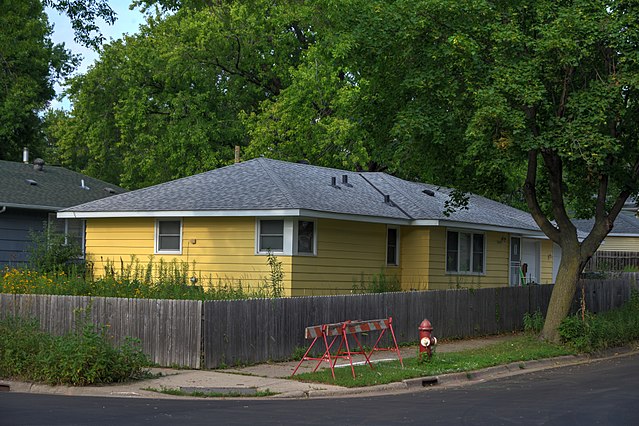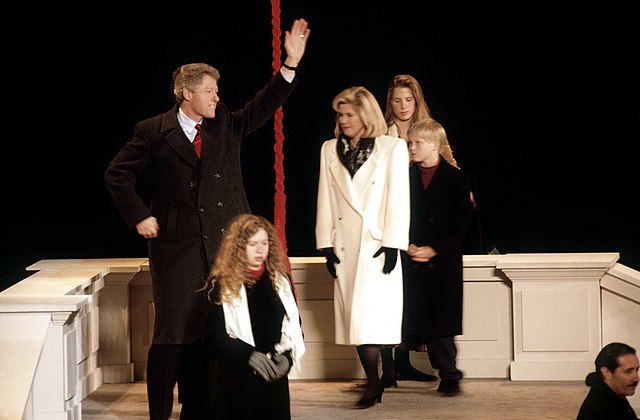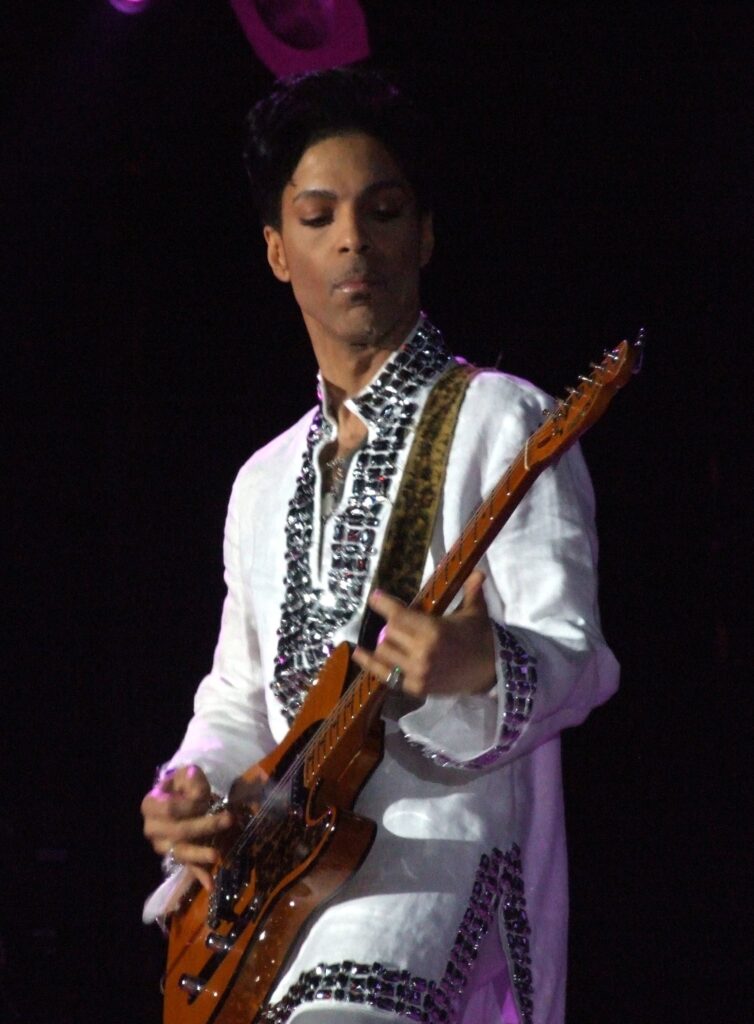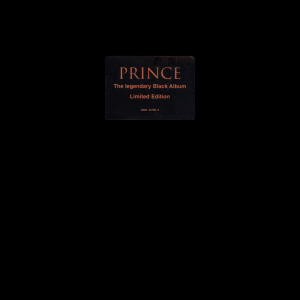There is so much you can say about Prince without venturing into hyperbole. He was quite literally one of the most brilliant guitar players in the history of music. He found creative ways to use his masterful production skills in the studio to invent new sounds and ideas. Prince could play almost every instrument he touched with a supernatural confidence and ability. His legacy did not just extend towards his own music, either. He starred in film, oversaw movie soundtracks, championed female musicians, was a sex icon in his own right, and even became a legendary comedy figure thanks to Chappelle’s Show.
Prince came up in the 1980s, the decade of excess, and while the other stars of that time like Madonna, Michael Jackson, and Bruce Springsteen might have been louder and more prominent, he was content to quietly produce album after album, and timeless hit after timeless hit. Prince was known as “The Purple One”, and here now is the story of one of the most mercurial and awe-inspiring talents that ever graced the music world.
A Prince Is Born
On June 7, 1958, Prince Rogers Nelson was born in Minneapolis, Minnesota, a place that he would call home and feel a special connection to for the better part of his life. His father was John Lewis Nelson, a piano player and songwriter, and his mother was Mattie Della, a jazz singer. The music was in his bones from the beginning. His grandparents had their roots in Louisiana, so he had that region’s culture to draw from as well. His father took the stage as Prince Rogers, and bestowed that name upon his son. Prince didn’t care for his name, and gave himself the nickname “Skipper”, utilizing it for the better part of his upbringing. Prince also had what seemed to be epilepsy, and suffered from intermittent seizures, though he allegedly told his mother that they were finally cured by an angel.
Music came fast. By age seven, Prince had written his first proper song, called “Funk Machine”, on his father’s piano. His little sister Tyka was his frequent muse, and they often performed around the house together. Their parents would divorce when Prince was ten years old, though his father would buy him his first guitar, a crucial step in the young musician’s ascent to greatness.
Prince’s mother would remarry, to a man named Hayward Baker. They had a tense relationship, though Baker would take him to see the legendary James Brown in concert. Prince was also quite the sports star, excelling in football, basketball, and baseball, and making a name for himself in the Minneapolis sports scene.

Credit: August Schwerdfeger – Own work, CC BY 4.0
In 1973, while in junior high, Prince had a fateful encounter with Jimmy Jam, who would go on to become a massively-popular record producer. Jimmy was immediately taken aback by the skills that Prince showed on many different instruments, and reflected on how he and Prince would practice their own skills during breaks from school work:
“There was a keyboard room set up, and the teacher would give you ‘London Bridge’ or ‘Mary Had a Little Lamb’ and ask you to learn it. When she’d leave, we’d put on the headphones and rip through these keyboards. I was always blown away by his talent level. I didn’t want to get behind the drum set again! He was nuts. That was my awakening to his talent and genius.”
Jimmy Jam immediately saw something in Prince, and noted that his work ethic was unlike anything he had ever seen. Their paths would cross again in the future.
Two years later, Prince would be a part of his first legitimate band, called 94 East. The group also consisted of Pepe Willie, who was husband to Prince’s cousin, Marcy Ingvoldstad, Kristie Lazenberry, and Andre Cymone, a friend to Prince. Prince laid down guitar parts for the group for some songs they were working on in the studio. It must have given him the first scratch that he needed to itch, because in 1976, Prince made his first genuine studio demo, with the help of Minneapolis producer Chris Moon.
Moon began to shop the demo around to record companies, but found no takers, so he enlisted the help of a businessman friend of his in town, Owen Husney, who liked what he heard enough to sign the then-19-year-old to a management contract. Husney now had to get Prince to make a proper recording, which he did at Sound 80 Studios in Minneapolis, and put together a press kit to start to finally entice some record labels. It began to work. Columbia, Warner Brothers, and several other high-profile companies began to swarm around the young Prince.
Warner Brothers was the label Prince ultimately decided on, partly because they promised him creative control over his music, even if they still retained the publishing rights. In 1978, Prince and Husney headed to California and the world-famous Record Plant studio, and made his debut album, For You. Of the nine songs contained on the record, Prince wrote every word, sang every lyric, and played every single of the twenty-seven instruments. The album spawned a few minor hits, most notably “Soft and Wet”.
Prince’s 1979 sophomore effort, simply titled Prince, was when things really started to take off, however. The album went platinum, had two major hits, “Why You Wanna Treat Me So Bad?” and “I Wanna Be Your Lover”, and featured the first of his professionally-assembled bands. The next year saw his third album, Dirty Mind, created in his own home studio, and an opening slot on Rick James’ 1980 tour. Things were in momentum, but there were still some hiccups for the young, burgeoning star. After 1981’s Controversy was released, Prince was offered a spot on the Rolling Stones tour. During a stop in Los Angeles, he was forced to leave the stage after only three songs, after Stones fans began throwing trash at the stage. Still, the world was prime for Prince’s taking, and it seemed nothing would stop him. But even those lofty expectations were exceeded the next year.
Purple Reign
Double albums are notoriously hard to market, and fickle to get consumers to buy. It’s a lot of content, sure, but it’s also twice the price. When Prince released 1999 in 1982, it wasn’t just the album title that was light years ahead of its time. The music was absolutely stunning, and record buyers agreed, as the album sold over three million copies. Songs like the title track, “Delirious”, and “Little Red Corvette” were certified smashes, spurred on by the massive popularity of music channel MTV, where Prince had some of the first black music videos ever aired.
Prince was not done topping himself yet, however. After officially christening his stellar backing back as “the Revolution”, they set out to create a film and album combination that would change the game. And it did. Purple Rain was the vehicle that sent Prince from respected musician to stratospheric superstar. The film version was based loosely on his life, and the album sold over 13 million copies. At one time, Prince had the number one album, song, and film in the country, something that had never been done before. Not everyone was impressed by this amazing run of success, though.
Tipper Gore, wife of Al, heard her daughter listening to one of Prince’s songs called “Darling Nikki” one day. The song is overtly sexual, and references to masturbation, among other things. This inspired her to create the notorious Parents Music Resource Center, which began slapping warning labels on records in an effort to clean up the industry and warn parents about the explicit material their children might be hearing. It still could not stop Prince’s popularity as a pop star and sexual icon.

The hit albums and songs kept coming at an absurdly prolific rate. 1985 saw Around the World in a Day, with the hit “Raspberry Beret”. Parade was released in 1986, containing “Kiss”, and the album actually served as a kind of soundtrack to his second starring role in a movie, the underwhelming Under the Cherry Moon, which Prince also directed. Acclaimed or not, there seemed to be nothing the man could not do, and no higher plateau to reach. So he went back to basics, and disbanded the Revolution.
Side Hustles
Prince was so prolific in his songwriting and creative ideas that he simply did not have enough time in one solo career. As far back as 1981, he was doing side projects, collaborations, and spin-offs with a whole slew of other artists. He started a side project that year called The Time. During the decade of the 80s, The Time put out four albums, and though the public knew that Prince had something to do with the group, his involvement wasn’t fully known for quite some time. Morris Day was the singer and leader of the group, but it turns out Prince was writing and recording most of the songs the group released.

Prince was also involved with a more jazzy band in 1985 called The Family. That one album featured songs solely written by Prince, and is notable for hosting the original version of “Nothing Compares 2 U”, which was made into a hit years later by Sinead O’Connor. He provided the Bangles with their smash 1986 hit “Manic Monday”. Sheena Easton, Chaka Khan, and Shelia E. all enjoyed some time on the charts because of songs that Prince couldn’t find a place for in his own discography.
When Prince wasn’t writing vaults full of songs, he was assembling entire groups from scratch. In 1981, before he had even really gained much traction in the music world, he put together an all-girl group called Vanity 6. But that wasn’t exactly the original name. At first, Prince wanted the trio of females to be dubbed “The Hookers”, but that didn’t come to pass. Prince dressed the girls in high heels and lingerie, and had them singing sexually-charged lyrics. And they were a hit, though for a short time. It seemed everything Prince touched turned to purple.
Breaking Free
Now that Prince was working without the constraints of a band, he funneled two side projects (surprise, surprise) that he had been working on into a massive, 3 LP project he intended to be called Crystal Ball. Warner Brothers apparently didn’t realize that Prince was pretty good at getting people to buy whatever he put out, so they demanded he cut back his ambitions. It was not the first time Prince and record companies would butt heads, and it would actually get much worse. But this time, Prince relented.
Sign o’ the Times was released in 1987, and likely earned him the most acclaim of any record he had put out to date, and those records are near timeless. It won a whole slew of end-of-year awards, and earned him a level of artistic respect that he hadn’t quite had previously.
Not content to rest on his laurels, Prince worked on more music, and more ways to reinvent himself. His next project would be The Black Album, and it would feature more gritty songs, with funk and hip hop influences. He also planned to pull a Beatles move, and release the album with a simple, one-color sleeve with no markings or words other than a catalog number. Nearly half a million of the albums were pressed and ready for shipping, before Prince had what he called a spiritual moment where he learned that the album itself was evil, and he shelved the entire project, mid-production. He quickly changed his tune and put out what he thought was a better message with 1988’s Lovesexy.
The last two years of the 1980s saw Prince try his hand at yet another motion picture, Graffiti Bridge, but unfortunately the film and accompanying soundtrack album were a massive disappointment, which seemed to start to reveal some chinks in Prince’s armor, and gave him a little less clout and leeway than he was afforded by his record label. He did make up for it somewhat with the songs he contributed to the 1989 Batman movie that Tim Burton directed. The album sold over 4 million copies, and drew a decade of astonishing career accomplishments to a close. Prince, of course, was looking at a new start for the coming 1990s.

That new start would include Prince’s very name. In what he called a combination of the male and female gender symbols, he drew up what was in essence an unpronounceable symbol. Some called it the “love symbol”, and the whole ordeal led to him being dubbed as “the artist formerly known as Prince” for a time.
Of course, this caused a rift with his record label, Warner Brothers, as they didn’t know how to market something that technically no longer had a name. The label began to push back, refusing to release the tons of music that he had contained in his vaults. His answer was to begin releasing massive amounts of new music (with new backing band the New Power Generation) at a super fast clip, in order to fulfill his contract quicker and be released from any more artistic obligations with Warner. He even appeared with the word “slave” on his face at public events to show how he felt he was being treated. And that’s how the first half of the 1990s went for the artist formerly known as Prince: he released six albums of quality music that likely wasn’t marketed very well by a label that no longer had control of him. What he wanted was true emancipation.
Now that he was free from the Warner Brothers contract that had slowly been stifling him, emancipation was exactly what he was feeling. And that’s exactly what he named his 1996, 3 disc album. In 1998, he began emancipating some old material of his that Warner wanted no part of, with the 5 disc Crystal Ball. In 1999, he finally decided that he wanted to reunite with a major label and have access to the tools at their disposal. He cut a deal with Arista Records, putting out Rave Un2 the Joy Fantastic, and then ending the millennium with an all-star televised concert on New Year’s Eve. While the decade of the 1990s was fraught with turmoil for the artist formerly known as Prince, he had finally gained his artistic freedom, and was nowhere near done trying on new ideas musically.
Rave Un2 the 2000s
In mid-2000, Prince decided he was comfortable enough to be called by his given name once more. He was still enamored with the “love symbol”, however, and continued to use it in many forms, including a gorgeous purple guitar. Prince was also utilizing new technology to bring his music to the masses. He was one of the first artists to use the internet to establish a subscription service to release albums. It was basically iTunes many years before the fact.
Prince was showing more and more how devoted he was to his fans. Besides the internet releases that cut out record label middlemen and gave music directly to the people, he also began opening up his home, the famous Paisley Park studios in Minneapolis, to concerts and tours.
In the mid-2000s, Prince played a series of performances that would drop jaws and define him for years to come. One was during his own induction into the Rock and Roll Hall of Fame. Of special note is the jam he joined near the end for fellow inductee, Beatle George Harrison. While on stage with Harrison’s son Dhani and Tom Petty, Prince uncorked a two minute guitar solo that left the entire stage and viewing audience floored.
In 2007, Prince was announced as the halftime performer at Super Bowl XLI. When the second quarter ended, a stage was unveiled that took the form of his very own love symbol. For the next eighteen minutes, Prince had the majority of the world in his hand. It was almost a storybook performance. 140 million people watched as the rain came down, and of course Prince took full advantage of the moment, closing out with “Purple Rain”.
Prince was still prolific with his artistic output in the 2000s, including some eclectic forays into jazz on 2001’s The Rainbow Children, and a return-to-basics sound on 2006’s 3121. And while he didn’t have as many thunderous hits like he did in the 1980s, he was always maturing and growing creatively. Much of that decade and the 2010s were almost a victory lap for Prince, with defining performances at venues like the Grammys, Coachella, and the Montreux Jazz Festival.
Swan Song
Much like he had formed an all-girl group in 1981, so too did Prince approach the idea of having female musicians backing him in 2013. He dubbed them 3rdeyegirl, and he embarked on a few critically-acclaimed tours with them for the next few years, and releasing a few studio albums. In 2016, Prince went on the “Piano & a Microphone Tour”, which is exactly what it sounds like, and showed how well his material was constructed at the most basic level. Unfortunately, this time is when Prince’s health began to decline.
On April 7th, Prince had to cancel two performances of his piano tour in Atlanta, citing the flu. He was able to rally for his April 13th show, but on the subsequent flight home the next morning, his jet had to make an emergency landing in Illinois when he became unresponsive. He was rushed to the emergency room and given a drug usually meant to revive opioid overdose victims. It worked, and he then left the ER against the advice of doctors. He made a series of sporadic public appearances the next few days before seeing a specialist in addiction medication on April 20th in California. That specialist’s son was on his way to Prince’s home the next morning with medication to fight opioid addiction, but was surprised to see emergency crews trying to revive Prince. He was declared dead at 10:07 am, from an overdose of fentanyl.
Prince was twice divorced, and never known to have fathered any children. Music was literally his baby, and the amount of art left behind in his Paisley Park home vaults is simply staggering. There will likely be several more lifetimes of Prince music to come, and it’s clear that his reign is nowhere near over as the Purple One.



